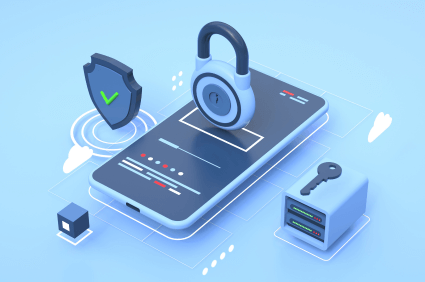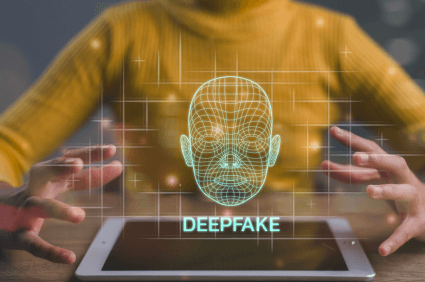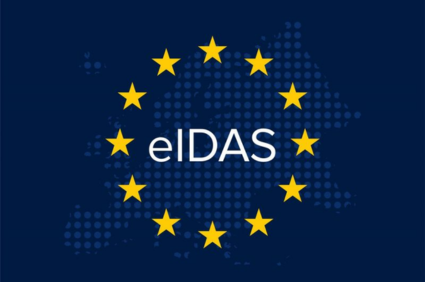Before going any further, what do we mean by Digital Identity? It’s more than just the details of your civil status.
What is digital identity?
Digital identity is a “concept with many faces.”
First of all, let’s remember the difference between a “legal” identity, which is linked to the individual’s civil status and is used in particular for administrative or formal procedures, and a so-called “non-legal” identity, which can be employed in a variety of situations, for example, to buy an item on the Internet or sign up for online games. These latter actions could be linked to a pseudonym or, better still, anonymized.
Therefore, the term “digital identity” can be used in the plural, as its uses are as varied as the data that makes it up. This data is called attributes. When linking these attributes to a person, they can include surname, first name, age, place of birth, pseudonym, and much more.
Some attributes, such as place and date of birth or fingerprint, are immutable. Others may change over time, such as address or location.
In addition to creating this digital identity, its verification ensures that one or more attributes are compliant and associated with the right person (proof of ownership).
To accelerate the use of digital identities while ensuring maximum user protection, the European Commission took up the issue in 2022, introducing new provisions designed to raise the requirements. These new provisions are to be found in the regulations known as eIDAS 2.0.
Digital identity accelerated by eiDAS 2.0
Before presenting eIDAS 2.0, it is worth recalling the issues surrounding the first version of this European regulation. The eIDAS 1 regulation, which came into force in 2016, had the following primary objectives:
Creating qualified trust services that are interoperable between European countries
Secure electronic interactions between businesses, citizens, and public authorities within the European Union.
Since its implementation, the eIDAS 1 regulation has enabled the development of online authentication, subscription, and legal commitment. However, adoption has been less widespread. Only 14 EU Member States have notified a digital identity scheme (representing 59% of the population), far from the 80% population coverage target by 2030. The other stumbling block is the need for interoperability between countries.
To achieve its objectives, and in particular the goal of 80% population coverage by 2030, the new eiDAS regulation includes new requirements, such as:
- Making interoperable identity wallets available to citizens and businesses.
- Private players are obligated to accept identity wallets to extend their use.
- Integrating the electronic signature into the identity wallet simplifies and secures online transactions.
- Opening up the wallet to an ecosystem of private players.
Why use the smartphone as a means of electronic identification?
The smartphone is an ideal medium for electronic identification (e-ID) for several reasons:
Ubiquity and accessibility
Smartphones are ubiquitous these days. Almost everyone has one, making them a means of identification accessible to most people.
In many countries, 80% of the population own a smartphone.
The smartphone’s compact, portable form factor makes it easy to carry and use on the move.
Ease of use
Smartphones have intuitive and interactive user interfaces, making using e-ID applications for authentication and digital signatures easy.
Most people are already familiar with using their smartphones for various tasks, which makes learning to use e-ID applications all the easier.
Increased security
Smartphones can be equipped with advanced security technologies such as biometric sensors (fingerprints, facial recognition) for strong authentication and protection against unauthorized access.
e-ID applications can store identification data securely and encrypted on the smartphone, reducing the risk of theft or forgery.
Multiple functionalities
In addition to identification and digital signature, smartphones can be equipped with additional e-ID functionalities, such as secure storage of identity documents, mobile payment, and electronic voting.
Scalability and flexibility
e-ID smartphone applications can be easily updated and enhanced to add new functionality and meet users’ evolving needs.
What are the uses of digital identity on mobile applications?
In an increasingly connected world, digital identity on mobile applications significantly shapes our daily lives, offering practical and innovative solutions for personal and professional life.
Here are a few possible uses, but the possibilities are almost endless. Let’s take a look at a few examples below.
Digital identity at work
In the modern enterprise, mobile digital identity facilitates secure access to business resources. Employees can use their smartphones to authenticate themselves, access internal applications and buildings (dematerialized badge), and even unlock their computers via secure connections. This simplifies the authentication process while strengthening the security of sensitive company data.
Qualified electronic signature
Mobile digital identity is based on the highest level of identification by combining different elements:
- Collection and analysis of identity documents ;
- Video verification to ensure that the person is who they claim to be;
- Confirmation by agents to ensure optimum qualification.
Once the identity has been validated and qualified, once and for all, it is possible to engage a qualified signature that offers the best legal guarantees. Qualified signatures are now more accessible and will gradually become the norm, whatever the document type to be signed.
Mobile electronic signatures will speed up all kinds of transactions with complete security and compliance.
You’ll be able to :
- Take out a loan
- Subscribe to services (insurance, telephony/Internet, energy, etc.)
- Sign a property deed of sale, employment contract, tenancy agreement, etc.
- Sign a business document, such as the minutes of a General Meeting of Shareholders.
This list needs to be completed, and there are many other possibilities. Once signed, the documents will automatically be stored in the mobile application.
Always within reach
Over time, we have multiplied our storage spaces. It’s hard to track them all, not to mention the risks associated with the lack of security: we spend hours looking for a document.
With this mobile digital identity application, all your documents are at your fingertips. Storing, sharing, everything will become simpler.
Connected health and digital identity
In healthcare, mobile applications are leveraging digital identity to create more integrated healthcare experiences. Patients can securely access their medical records, manage appointments, and even share medical information with healthcare professionals. This simplifies personal health management while ensuring the confidentiality of sensitive data.
Travel and mobility
Think about your travel and business trips. Digital identity on mobile applications allows travelers to simplify their experience, whether checking in for a flight online, booking hotels, or accessing car rental services. Personal information is secure, guaranteeing a hassle-free, personalized experience at every journey stage.
In conclusion, mobile digital identity is no longer simply a collection of data. It becomes a virtual extension of our real identity, optimizing our daily and professional experiences. By highlighting these practical cases, we hope to help everyone visualize how their digital identity can be a valuable ally, simplifying and enhancing various aspects of their lives.


